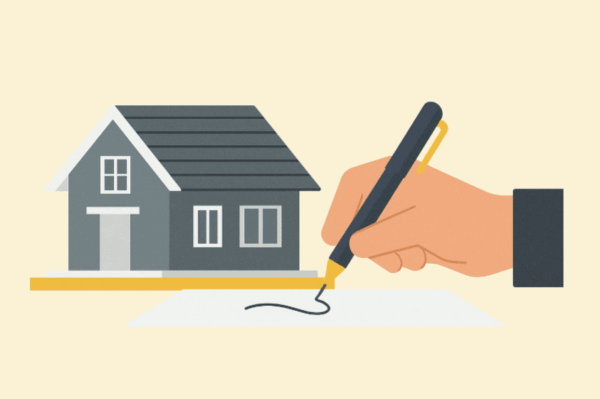VA Home Loans: Your Simple Guide to Getting a Home
For millions of people who served in the military, owning a home can become a reality much
more easily thanks to VA home loans. These special home loans are backed by the U.S.
Department of Veterans Affairs. They offer big advantages to help military families buy homes,
showing our country’s appreciation for their service. Unlike regular home loans, a veteran home loan is made available only to those who served, making it a key benefit for eligible service members. Unlike most traditional loan options military home loans allow eligible buyers to purchase a home without any down payment and no private mortgage insurance, make it an amazing option for members of the Veteran community. This guide to VA home loans will walk you through everything you need to know about getting a VA mortgage, from figuring out if you qualify, to applying for the loan, checking out ways to refinance, and understanding the costs.

Who Can Get a VA Home Loan and What Are the Benefits?
Starting your path to a VA home loan means first understanding VA home loan eligibility –
basically, who can get one. Generally, if you’re on active duty, a veteran, a National Guard
member, or a reservist, you may qualify. In some cases, certain surviving spouses can too. The
exact rules depend on when and how long you served, and your discharge status. Your first
important step is getting a Certificate of Eligibility (COE) from the VA. This paper proves to
lenders that you meet the VA’s service requirements. Once you qualify, the VA home loan
benefits are fantastic. The biggest plus is often the VA loan no down payment option. This
means you can borrow the full price of the home, and don’t need to save up a large sum of
money upfront. This can be a huge help, especially when homes are expensive and saving for a
down payment is tough. Also, VA loans don’t require Private Mortgage Insurance (PMI). Regular
loans usually make you pay PMI if you put less than 20% down. Getting rid of this monthly cost
makes owning a home cheaper over time.
Even though there’s no PMI, you should be aware of the VA funding fee. This is a one-time fee
paid to the VA that helps cover the cost of the loan program. How much you pay depends on
things like your service type, the type of loan, and if it’s your first time using this benefit. Besides these money-saving perks, VA loans often have easier credit rules than regular loans. Lenders will still check your credit, but the rules can be more flexible. VA loans also offer competitive VA loan rates, which we’ll talk about next. This makes the overall cost of borrowing less expensive for service members and veterans. For more details on who qualifies and what you get, visit the official VA Home Loans website. The support from the Department of Veterans Affairs home loan program is there to help those who served reach their dream of owning a home with less hassle and fewer money worries.
How VA Loan Rates Work and How to Apply
When thinking about a VA mortgage knowing about and keeping up with current VA loan rates is important. These rates are usually very good, and often lower than rates for regular loans, because the VA guarantees part of the loan to the lenders. The rates do change with the market so in order to make sure you’re getting the best rate shop around and compare offers from different lenders. Besides rates, the process to apply for VA loan is pretty straightforward. You’ll need to gather financial papers like proof of income, job history, and bank statements, just like with other home loans. But with a VA loan, you’ll also give your COE to your chosen lender.
The application usually kicks off with a VA loan pre-approval or VA mortgage prequalification.
Pre-approval is a more thorough check of your finances by a lender, giving you a better idea of
how much you can borrow. This will allow you to set your budget and help the process move faster once you find a home. Picking the right VA mortgage lenders is also key. Not all lenders specialize in VA loans, so in order for things to run smoothly it’s important to find one with experience, who knows all the ins and outs of the program. Once you send in your application and all your documents, the lender will work towards your VA loan approval. They’ll get an appraisal to make sure the home meets VA rules, and check your finances to ensure you meet all the VA loan requirements. For more on how to apply and pick a lender, helpful sites like USAA offer good advice.
Handling Your VA Mortgage: Refinancing and Other Costs
If you already have a VA mortgage, and are looking to refinance there are several ways to do so. A VA cash-out refinance allows you to take money out of your home’s value. You can use this cash for things like home improvements, paying off other debts, or other big expenses. This loan replaces your current mortgage with a new VA loan, possibly with new terms. Another popular choice is the VA streamline refinance, also known as an Interest Rate Reduction Refinance Loan (IRRRL). A VA IRRRL is designed to help you get a lower interest rate or change from a changing (adjustable) rate to a steady (fixed) rate with very little paperwork. It usually doesn’t need an appraisal, proof of income, or a full credit check, making it a fast and easy way to cut your monthly payments or lock in your interest rate. This makes the VA streamline refinance a very appealing choice for many.
Besides refinancing, it’s good to understand the VA loan closing costs. While VA loans skip PMI
and often the down payment, you’ll still have some costs when the loan closes. These can
include appraisal fees, title insurance, recording fees, and sometimes points if you pay extra to
get a lower interest rate. The VA has specific rules about which fees you can pay. Sometimes,
the seller can also pay some of these costs, which can save you money upfront. To help figure out these costs and what your monthly payments might be, you can use a VA mortgage calculator. These online calculators let you put in your loan amount, interest rate, and how long you’ll pay, to get an estimate of your monthly principal and interest payment. Lastly, know about VA loan limits. These are the highest loan amounts the VA will guarantee without needing a down payment for eligible borrowers who have their full entitlement. While many areas don’t have a specific limit, some expensive areas might. So, it’s smart to check the current VA loan limits for where you want to buy, on the VA’s official website.
In short, the VA home loan program is an amazing benefit. It offers big financial advantages and
an easier way to own a home for qualified service members and veterans. From special perks
like no down payment and no PMI, to easy refinancing and good rates, these loans are made to
honor service by giving you a real, lasting asset. By understanding your VA home loan
eligibility, going through the application steps, and managing your loan smartly, you can really
make the most of this valuable benefit from the Department of Veterans Affairs. If you’re ready
for the next step, you might want to read more detailed articles on specific topics like
“Understanding the VA Funding Fee” or “Comparing VA Streamline vs. Cash-Out Refinance
Options” to learn even more. For up-to-date rates and extra info, you can always visit The
Military Wallet.




